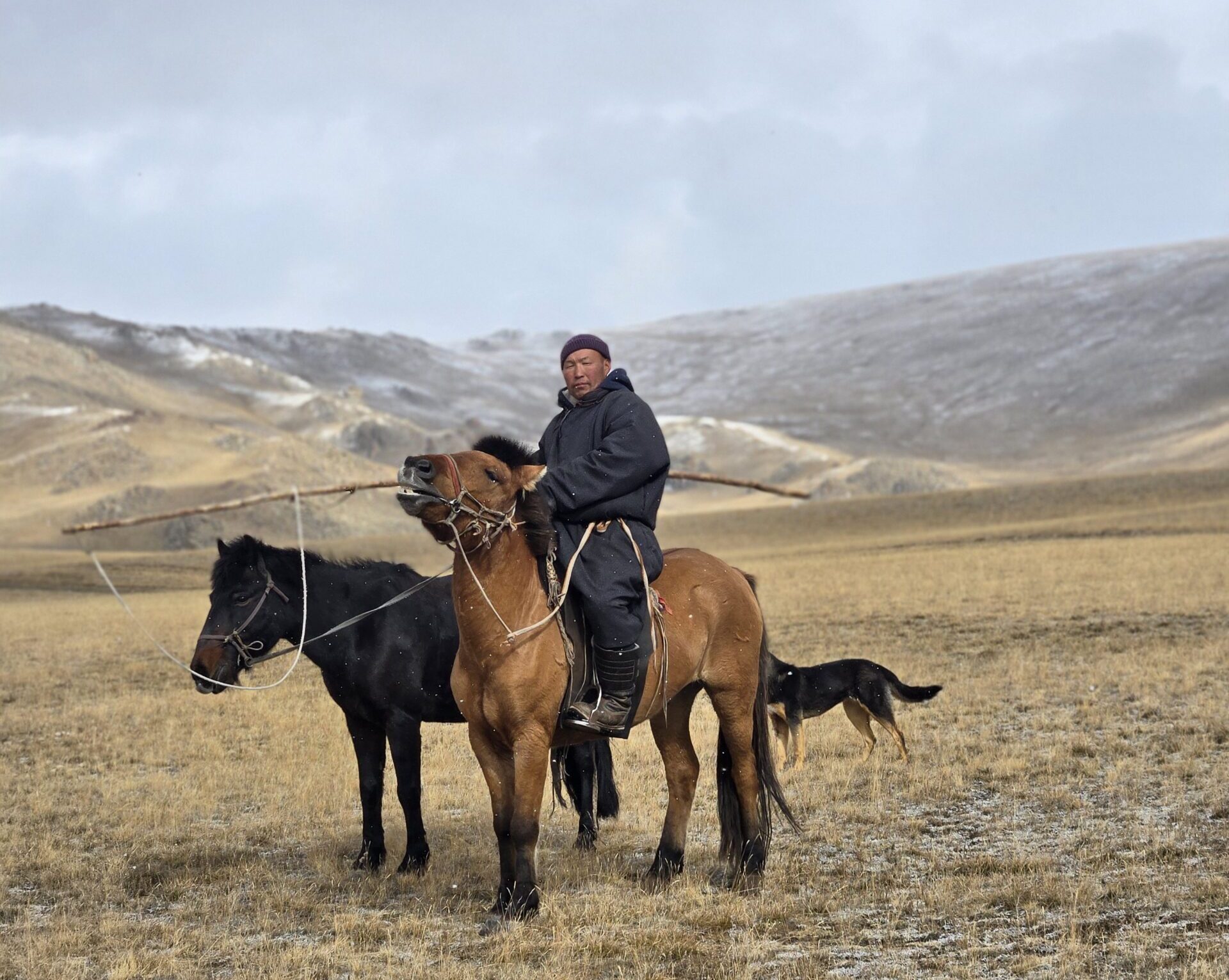The Life of a Herder: Balancing tradition and modern challenges
Herder Dorj, a testament to Mongolia’s enduring nomadic heritage, lives with his wife and two sons, continuing the legacy of his father and grandfather. Their family tends approximately 500 sheep, goats, cattle, and horses, embodying a way of life that has defined Mongolia for centuries.
Originally hailing from Uvs Province, 1,000 km from Ulaanbaatar, Dorj now resides closer to the capital, just 100 km away. Reflecting on his childhood, he remarks, “Kids born in the city grow up playing games, while the children of herders start managing livestock as soon as they can walk and talk.”
Tradition Meets Modernity
Before Mongolia’s transition to a market economy, many herder families followed an unwritten rule: sons would leave school by the 4th or 5th grade to take up herding. Dorj, like many others, followed this path. Today, he aspires to double his livestock to 1,000 within three years, aiming for the coveted state honor reserved for exceptional herders.
During the economic shift of the 1990s, herders, including Dorj, migrated closer to Ulaanbaatar to reduce transportation costs for products like milk, wool, and meat. However, as market dynamics evolved and prices dropped, remote areas with better pastures became more appealing. “Raising livestock near the city is problematic,” Dorj explains. “The pasture is poor, and there is a lack of water wells. During a dzud, survival becomes even more challenging.”
The Toughest Winters on Earth
Herders endure extreme conditions, with winter temperatures plunging to -40°C to -50°C and heavy snowfalls making roads impassable. In such harsh environments, horses replace motorcycles for tending livestock. Medical care remains a challenge; reaching hospitals often requires traveling by horseback or waiting for visiting doctors.
Despite these hardships, Dorj’s family remains resilient. Spring, a critical season, sees 400 of their 500 animals give birth, demanding constant care. Cashmere collection during this time is crucial, as it provides much-needed income. In 2024, the price of raw cashmere rose to 185,000 MNT per kg (£40-£45), reflecting fluctuating market demands.
Modernizing the Nomadic Life
With earnings from cashmere, families invest in modern amenities like solar panels, refrigerators, and televisions, blending traditional lifestyles with contemporary conveniences. Motorcycles now replace horses for many tasks, and summers bring a lighter workload. Men prepare horses for the Naadam festival, while women focus on producing airag, a fermented mare’s milk cherished by locals and visitors alike.
A Pillar of Mongolia’s Economy
Herders remain integral to Mongolia’s economy and cultural identity. The country’s livestock population exceeds 60 million, nearly half of which are sheep, sustaining the nation’s food security and preserving its nomadic traditions. Their tireless dedication ensures that Mongolia’s heritage thrives, earning herders widespread respect and admiration across the country.
Writer Flora grew up in the city, began guiding tours in 8th grade, and later became a travel journalist, sharing Mongolia’s stories.

